In this two-page article, we review the AudioQuest Tower and Golden Gate RCA interconnects.
Disclaimer: All cables were sent as review samples. As always, I am here to share my honest opinion with you.
Intro
Cable reviews are a difficult field to write, and every audiophile has different experiences. Some people believe cables make a difference, others don’t. First of all, I should state that my purpose is not to prove or defend anything. I just aim to convey my experience with the products sent to me. If you think cables don’t make a difference and you don’t respect other opinions, this review is not for you.
Having said that in advance, I want to tell you a little bit about today’s review. AudioQuest sent me a few good-looking cables and I’ve been testing these cables for about 3 months now. This review will be a bit experiential and I hope you have a good time reading it.
Before I go any further here, I would like to tell you a little about the AudioQuest company, in case some of you may not know.
AudioQuest
AudioQuest has been a major supplier to the high-end audio and video cable market for over 40 years. In fact, their products are sold in hundreds of stores in more than 70 countries. William E. Low, a.k.a. Bill, founded AudioQuest in 1980 at his one-man hifi-shop in Irvine, California, US. From the very first years, Bill saw AudioQuest as a company that develops tools for enhancing the in-home experience of audio and video entertainment. At that time AudioQuest was making phono cartridges, custom cables, and various other products. Let’s take a historical dive, together.
In 1985, they became the first US high-performance wire company to use advanced conductor technology in their cables. Like then and now, AudioQuest is working and striving to make better cables every day. In 2012, they made a striking entry into the portable equipment market with their “DragonFly” portable DAC-AMP adapter.
As someone who witnessed the Dragonfly’s success first-hand, I was surprised that the Dragonfly was so popular in my country where the audio hobby, especially the portable side, is not very common, and I soon started to think that I should get one for myself. Shortly after I got myself one, I couldn’t go out without it. I was using a lot of public transport and that was not helping the cause.
In 2014, AudioQuest entered the headphone market with the beautiful Nighthawk headphone and received positive feedback from fans around the world. In 2015, they introduced the Niagara 7000 power conditioner. In 2016, the DragonFly Black and Red were introduced and they were firmware-upgradable supporting the latest DACs available. In fact, I have recommended the DragonFly Black to many of my friends, and the majority of those who have purchased it, still use it today. AudioQuest continues to develop and expand its product range day by day. If you want to take a look at AudioQuest’s wide product range, you can click here. You can also learn more about the history of AudioQuest here.
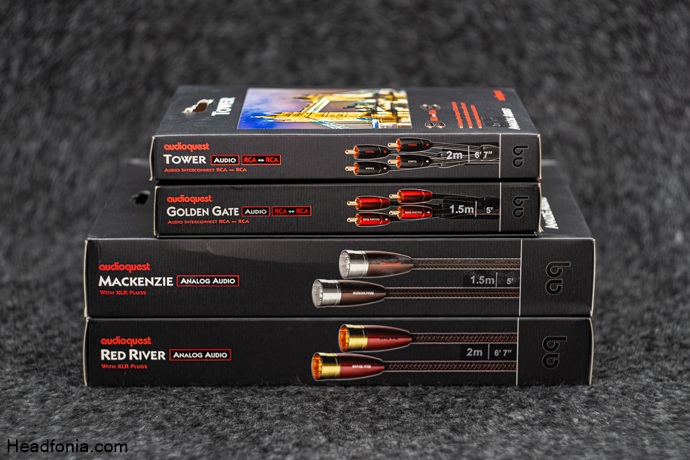
Preamble
In this paragraph, I will tell you more about myself, my previous experience with cables, and my current setup. Without further ado, let’s start.
It has been about 12 years since I started to take an intense interest in this hobby. In these 12 years, I had the opportunity to listen to hundreds of IEMs, dozens of full-size headphones, and various accessories such as cables. In the beginning, the audio hobby consisted of spending money in pursuit of the perfect for me. Thanks to the euphoric state caused by better sound quality, I soon started listening to “sounds” instead of music. I really enjoyed spending the money I earned, constantly buying and experiencing new things, and it fed the shopaholic in me wonderfully.
It didn’t take long for me to realize that this behaviour was not “healthy” and I thought that I should join a community so that I can control my buying impulse by going on meets and trying out various gear. In a short time, I became a member of local forums, attended meetings, and started to discuss equipment on international forums.
At a meeting I attended circa 2012, a group of people was discussing upgrade cables and they had a few cables lying in front of them. After I went there and tried a few with my IEMs and DAP, I was quite surprised by the result. The difference was quite audible, and my Westone UM3X’s treble presentation was better with the upgrade cable. After the meeting and my epiphany, I tried to learn as much as I could about cables, alloys, shielding, wires, and so on.
I upgraded nearly all the cables I used, including my interconnects. While some changes made a positive difference, some made a negative difference. As you’ve noticed, my experience so far has been with analog cables.
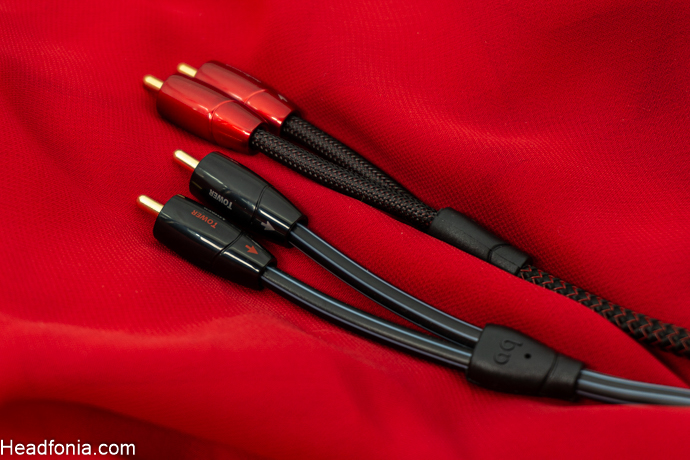
I met digital upgrade cables more recently, in 2015. I started to believe that USB cables should have quality shielding after a friend of mine who studied electronics showed me how important “clean power” is with a few sensitive microphones and various power supplies. I decided to upgrade my Micro-USB to Micro-USB data cable after I bought a Chord Mojo and it caused an RFI problem whenever I used 3G internet on my phone. My friend offered to build a good, shielded cable for my Mojo, and oh boy, he did build alright. My portable rig looked like a small-scale bomb in hand but we experienced a significant reduction in RFI as a result of switching to a thicker cable with good shielding.
After 2015, I had the chance to experience many cables and as a matter of fact, at some point, I decided to build my own IEM and headphone cables. For that, I spent a small fortune and looted the inventories of brands such as Mundorf, Wbt, Oyaide, Furutech, and Eidolic. I like building things so it was a fun new branch of the hobby for me. One thing I learned about cables or any other accessories related to this hobby is this: It’s system-dependent and what works for one person may not work for another. So trying before buying is the best thing you can do to protect both your wallet and your sanity.
That’s pretty much my story and background with cables. Before we take a closer look at AudioQuest cables, I would like to share my setup, which I have been using as a benchmark. The DAC/AMP is from FiiO, their newest and well-done unit, K9 Pro ESS. I really like this DAC/AMP as it is one of the relatively rare DACs featuring a toroidal PSU and houses two of ESS’s flagship DAC, the ES9038PRO. As a full-size test headphone, my weapon of choice is the Sennheiser 58X. It is modded (removed grill foam and driver foam) and I am very accustomed to its sound as I wear it daily for the past 3 years.
As for monitoring purposes, I use Vision Ears VE7 IEMs and Focal Alpha 80 active studio monitors. I will be testing the RCAs with these bad boys. All the equipment mentioned in the article is burned-in 50+ hours. Let’s get to the review without further ado.
AudioQuest Interconnect Cables
AudioQuest has 3 different series with different properties and specs. The Bridges & Falls series, the Rivers & Elements series, and the Mythical Series. The Mythical series is their TOTL offering. The Bridges & Falls series start at $31.95 USD. The Rivers & Elements series starts at $92.95 USD. The higher you go, the better materials you get, basically. You can find the detailed pricing and spec info for the US here, and the EU here.
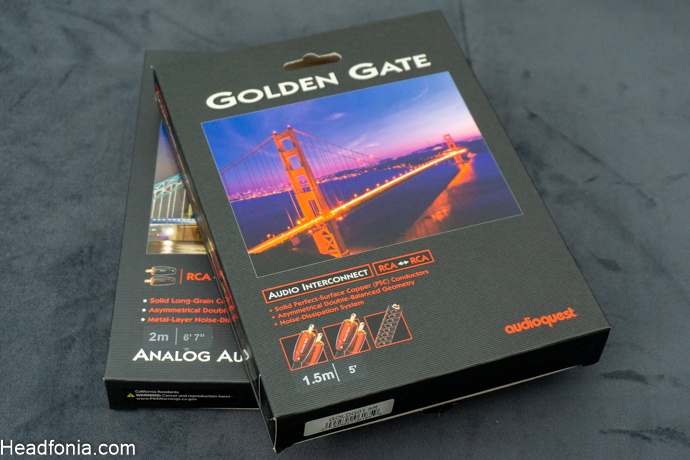
I’ve received two different RCA interconnect cables from AudioQuest. The Tower RCA (2m) retails for $39.95 USD and the Golden Gate (2m) retails for $94.95 USD.
Tower – RCA Interconnect
The Tower belongs to AudioQuest’s Bridges & Falls series and performance-wise, it is positioned at the very bottom of this series. It sports AudioQuest’s Solid Long-Grain Copper (LGC) instead of PSC or PSC+. It features Asymmetrical Double-Balanced geometry, Foamed-Polyethylene dialectic, and Metal-Layer Noise-Dissipation. It comes with a black/white striped PVC jacket instead of a braided jacket. Just like higher-priced cables, Audioquest did use cold-welding here also and the connectors are gold-plated.
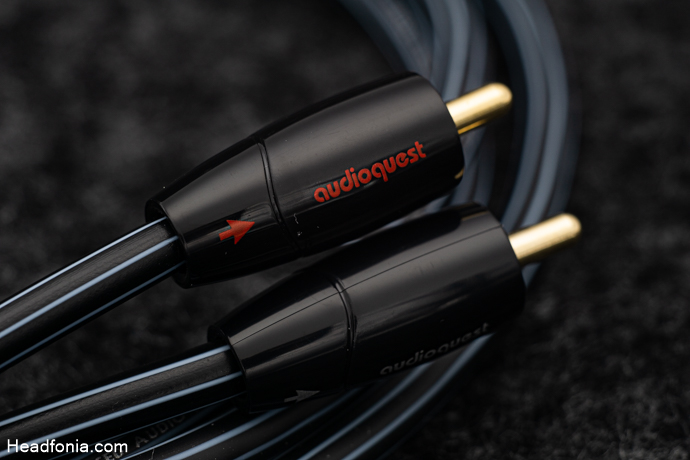
Similar to other AudioQuest cables, the Tower comes in neatly designed black packaging. On the front of the box, we see a photograph of London’s Tower Bridge. On the back, there is extensive and comprehensive information about the cable inside. The cable is placed inside of cardboard piece that has been designed to prevent the box from taking damage during transportation.
Let’s take a closer look at the build quality and design of the Tower RCA. This $40 RCA cable from Audioquest comes with a pretty good build quality for its price. Although I’m not a big fan of the striped design, the cable features a very good material quality that is above its price. The gold-plated plugs feel rigid and their housing is metal. It’s nice to see that Audioquest didn’t cut corners here with this entry-level RCA cable. This shows that they care equally about every product, no matter how far down the line. In my opinion, the Tower offers a killer value for money.
In this paragraph, I will describe how the Tower RCA affected the sound quality of my DAC & AMP. I will be comparing the Tower with the generic interconnects (such as ugreen RCA etc.) in my inventory. I also have a pure-copper chi-fi RCA cable. I will mention generic cables as “generics” in the text.
For this test, I used Topping E50 and L50 DAC & AMP because they have a very high price/performance ratio and they sound very good. I also know their signature well. First of all, my expectations were high and I need to say that the Tower did not disappoint. It outperformed my pure copper chi-fi cable which is double the price of the tower and introduced a good amount of air and spaciousness to the sound. The E50 and L50 have a very balanced sound signature with a very good resolution. They don’t have the widest or deepest stage, especially out of the SE output.
Pairing them with the Tower instead of generics improved the perceived headroom and improved imaging as well as other technical aspects, such as PRaT and resolution. For $39 USD, that’s quite impressive. One other thing I noticed is the highs sounded a tad more forward. Compared to the generics, the overall presentation sounded more energetic and more dynamic to my ears. If you are wondering about how it performs against Golden Gate, don’t worry, I will also compare them in the following chapter.
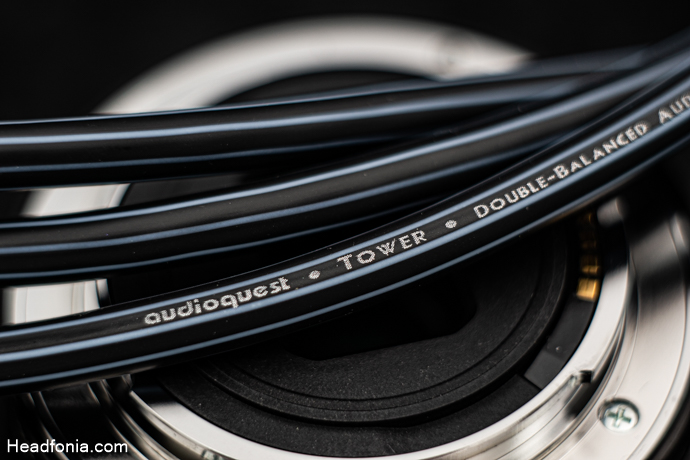
The review continues on Page Two, after the click HERE or by using the jump below.
Page 2: Golden Gate RCA Interconnect, Last Words







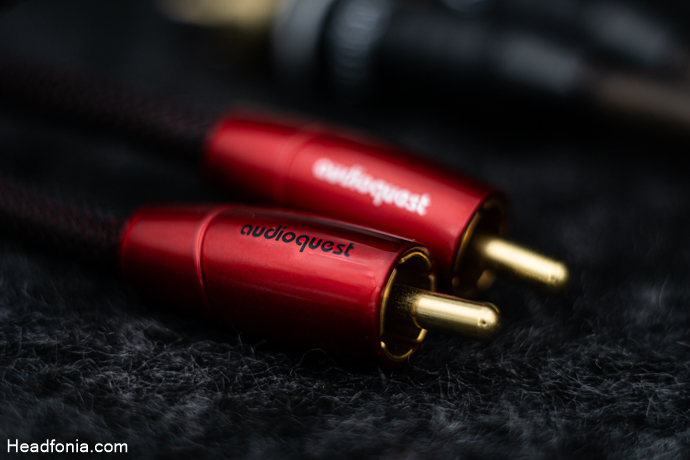
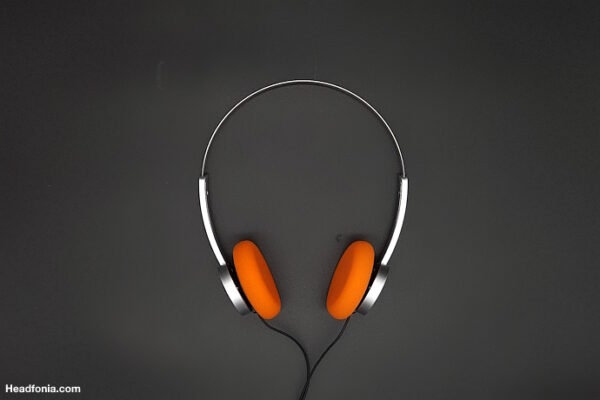
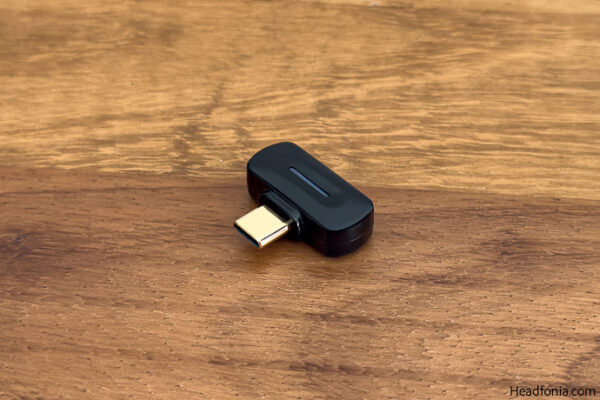
Wolf Gang
“Dialectic”? Seriously?